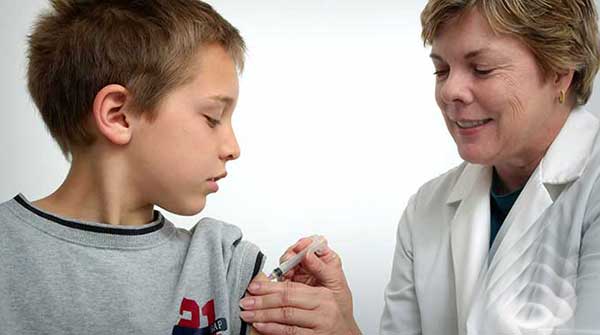We need to not only catch up to pre-COVID levels but we also should be trying to exceed our pre-COVID level
The percentage of Alberta students who received vital routine immunizations dropped dramatically during the COVID-19 pandemic, and the public health system must now take extra measures to catch up, according to a public health expert behind newly published research.

Shannon MacDonald
“School vaccinations came to a standstill during the pandemic,” says Shannon MacDonald, registered nurse, associate professor in the Faculty of Nursing and adjunct professor in the School of Public Health at the University of Alberta. “The public health system was operating in unprecedented circumstances and it could only be stretched so far.”
MacDonald’s research team reviewed immunization records for 289,420 Alberta adolescents scheduled to receive vaccines against meningococcal disease and human papillomavirus (HPV) before, during and immediately after pandemic school closures.
They found that while 65 per cent of children received the full HPV vaccine series before COVID, just five per cent were fully immunized against HPV during the first pandemic year and six per cent the following year. By the fall of 2021, the number had bounced back to 50 per cent. For the meningitis vaccine, immunization rates dropped from about 80 per cent pre-COVID to 55 per cent during the pandemic before rebounding to 83 per cent afterward.
 Photo by CDC |
| Related Stories |
| Researchers launch clinical trial for strep A vaccine
|
| Covid vaccine wrong approach to Covid pandemic
|
| Time to start the shingles vaccination campaign
|
Using immunization records from the 2017-18 pre-pandemic school year as a baseline, the researchers followed the students through the 2019-2020 first pandemic year and then into the fall of 2021 to assess catch-up. Alberta schools were closed and students moved to online instruction from mid-March 2020 until the end of the school year, and then parents had the choice of whether to send their kids for in-person or online learning during the following school year. MacDonald explains that even when schools reopened, public health nurses were redeployed to work in COVID-19 vaccination clinics, so the interruption of school immunizations continued.
“The fact is we want at least 90 per cent of kids vaccinated,” says MacDonald, “because we’re talking about a vaccine to prevent HPV-related cancers – throat cancer, penile cancer, cervical cancer – and another against meningococcal disease that can take kids’ hands and feet, or even their lives.
“Yes, we need to catch up to our pre-COVID levels, but we also should be trying to exceed our pre-COVID levels.”
Meningococcal disease is spread through saliva, and outbreaks can occur among unvaccinated young adults, leading to inflammation in the brain and spinal cord called meningitis. The disease can lead to brain damage, loss of limbs and even death. The vaccine against meningococcal disease is usually given in one dose in Grade 9, while the HPV vaccine is usually scheduled in two doses for Grade 6 students. HPV is a sexually transmitted virus that causes genital warts, but a long-term infection can lead to cervical and other cancers later in life. All routine immunizations require parental consent.
MacDonald says it is crucial for the public health system to take extra measures to catch up with routine immunizations before these students graduate and are much harder to track down. Measures already underway include sending extra nurses to schools to deliver missed doses, offering vaccines in high schools and encouraging families to visit public health clinics for missed immunizations. Other possible measures could include greater efforts to engage parents whose first language is not English using translated materials.
“We usually vaccinate kids against HPV in Grade 6, for example – not because they’re liable to get HPV in Grade 6, but because we are able to access essentially every child in the province through a school program,” says MacDonald, who is also an adjunct assistant professor in the Cumming School of Medicine at the University of Calgary and principal investigator in the Applied Immunization research program. “We know that school programs improve the equity of access because kids whose parents are working two jobs or who don’t have a car to go to a public health centre can still have their kids vaccinated.”
MacDonald notes that the rate of infant vaccinations also fell off during the pandemic, although not to the same extent as for school-aged children. Although there have been no outbreaks of vaccine-preventable diseases such as measles and polio in Canada due to missed vaccines, there have been in other parts of the world.
MacDonald is working on a follow-up study to track further recovery of routine school immunization rates, but she is hopeful that progress is already being made.
“Public health is starting to get caught up on things; they have made an additional investment of time and resources and staff to try and catch these kids up,” she says.
| By Gillian Rutherford
This article was submitted by the University of Alberta’s Folio online magazine, a Troy Media Editorial Content Provider Partner.
The opinions expressed by our columnists and contributors are theirs alone and do not inherently or expressly reflect the views of our publication.
© Troy Media
Troy Media is an editorial content provider to media outlets and its own hosted community news outlets across Canada.

